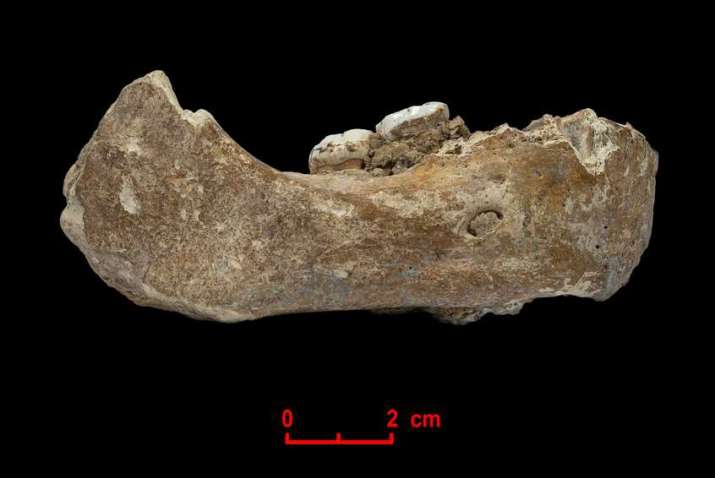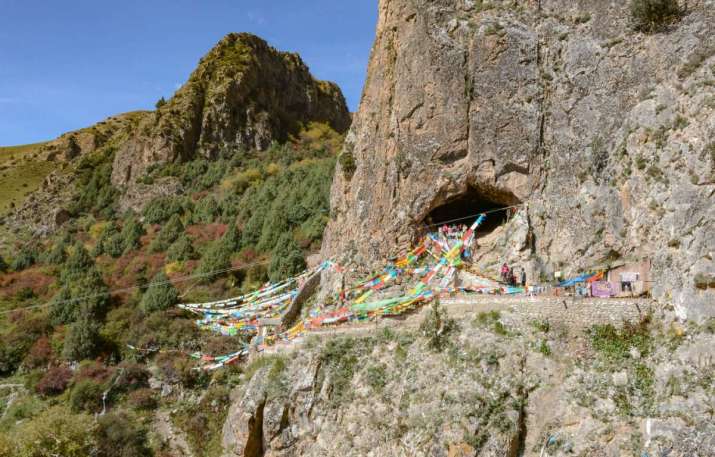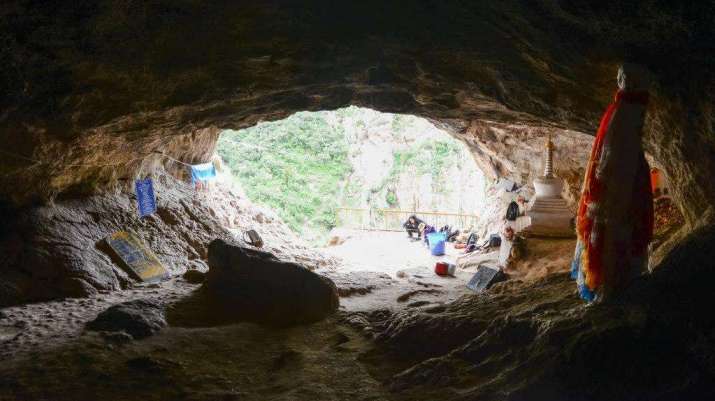NEWS
Buddhist Monk’s Fossil Discovery Casts Light on Ancient Inhabitants of the Tibetan Plateau
 This 160,000-year-old fossilized jawbone offers new insights into the history of life on the Tibetan Plateau and across Asia. From mpg.de
This 160,000-year-old fossilized jawbone offers new insights into the history of life on the Tibetan Plateau and across Asia. From mpg.deSome 40 years after being discovered inside a sacred Tibetan cave by a meditating Buddhist monk, a segment of bone has set the world of archaeology and anthropogeny alight after scientists on Wednesday reported that the fossilized jawbone, complete with two molars, belonged to a 160,000-year-old Denisovan—a member of a species of Neanderthal-like hominins who inhabited the region thousands of years before modern humans
The groundbreaking find of the fossilized lower mandible in Xiahe County, China, suggests that the first modern hominins to inhabit the area were not Neanderthals, as was previously assumed, instead indicating that Denisovan populations might once have been widespread and not limited to the Denisova Cave in Siberia, where the only previously known fossil fragments were discovered in 2010.
“The ancient proteins in the mandible are highly degraded and clearly distinguishable from modern proteins that may contaminate a sample,” said Frido Welker of the Department of Human Evolution at the Max Planck Institute for Evolutionary Anthropology (MPI-EVA) and the University of Copenhagen, and a member of the reserach team behind the discovery. “Our protein analysis shows that the Xiahe mandible belonged to a hominin population that was closely related to the Denisovans from Denisova Cave.” (Max-Planck-Gesellschaft)
The fossilized bone fragment was first discovered in Baishiya Karst Cave, a protected religious sanctuary that sits at an altitude of 3,280 meters in Gannan Tibetan Autonomous Prefecture, by a local monk in 1980. The monk donated the relic to his teacher, the Sixth Gung-Thang Living Buddha, who recognized its potential significance and subsequently passed the bone on to Lanzhou University.
 The fossil was first discovered inside Baishiya Karst Cave by a Buddhist monk in 1980. From mpg.de
The fossil was first discovered inside Baishiya Karst Cave by a Buddhist monk in 1980. From mpg.deResearchers Dongju Zhang and Fahu Chen at Lanzhou University began studying the area of the discovery and the cave site in 2010, and in 2016 they initiated a collaboration with the Department of Human Evolution at the MPI-EVA to help analyze the fossil. While no traces of DNA were preserved in the fossilized bone, scientists succeeded in extracting fragments of eight collagen proteins from one of the molars.
“Traces of Denisovan DNA are found in present-day Asian, Australian, and Melanesian populations, suggesting that these ancient hominins may have once been widespread,” said Jean-Jacques Hublin, director of the MPI-EVA and a co-author of the research. “Yet so far the only fossils representing this ancient hominin group were identified at Denisova Cave.” (Max-Planck-Gesellschaft)
The ancestral lineage of Denisovans separated from the ancestors of modern humans some 500,000 years ago, although scientists disagree over whether they should be regarded as a distinct species, or a subspecies of Homo sapiens. Whether due to being overcome by populations of modern humans or environmental factors, both Denisovans and Neanderthals are believed to have died out around 40,000–50,000 years ago, although they are also known to have interbred with the ancestors of modern humans.
According to the researchers, who published the results of their study in the journal Nature on 1 May, the jawbone is powerfully proportioned with very large molars, features also found among Neanderthals. A heavy carbonate crust enabled the teams of scientists to date it to at least 160,000 years ago. The find also reveals why analyses of the Siberian DNA indicated that Denisovans were adapted to living at high altitudes even though the Siberian cave is much closer to sea level.
From youtube.com
“Archaic hominins occupied the Tibetan plateau in the Middle Pleistocene and successfully adapted to high-altitude, low-oxygen environments long before the regional arrival of modern Homo sapiens,” said Zhang of Lanzhou University, who co-led the research. (Max-Planck-Gesellschaft)
The new understanding pushes back the earliest known presence of humans at high altitude by around 120,000 years—modern humans are not thought to have inhabited the Tibetan plateau until some 40,000 years ago.
“Frankly speaking, until today, nobody ever imagined that archaic humans could be able to dwell in such an environment,” said Hublin. “It’s a big surprise because most people thought that challenging environments like the high altitudes were colonized only by modern humans like us less than 40,000 years ago.” (Discover)
The revelation could help anthropologists identify other Denisovans among previously discovered remains, suggesting that populations were spread across Asia. Chen and Zhang carried out their first excavation at the cave in December 2018, unearthing stone tools and cut-marked animal bones from two small trenches. The researchers hope to return to Baishiya Karst Cave soon, with permission from local villagers and Buddhist officials, to conduct further digs.
 Sitting at an altitude of 3,280 meters, Baishiya Karst Cave is a protected religious sanctuary. From gizmodo.com
Sitting at an altitude of 3,280 meters, Baishiya Karst Cave is a protected religious sanctuary. From gizmodo.com“In China there are a number of specimens that are not Homo erectus, that are not modern humans, and that are good candidates for being Chinese Denisovans,” said Hublin. “But this has been impossible to prove today because in these fossils there is no ancient DNA preserved.” (Discover)
The implications, from an anthropogenic perspective, are significant: “Forget the textbooks,” archaeologist Robin Dennell of the University of Sheffield in the United Kingdom, who was not a member of the research team, told the journal Science. “Human evolution in Asia is far more complex than we currently understand, and probably does involve multiple lineages, some of which probably engaged with our species.”
See more
A late Middle Pleistocene Denisovan mandible from the Tibetan Plateau (Nature)
Denisovan Find Hints The Extinct Humans Colonized The ‘Roof of the World’ (Discover)
First hominins on the Tibetan Plateau were Denisovans (Max-Planck-Gesellschaft)
First fossil jaw of Denisovans finally puts a face on elusive human relatives (Science)
Related news from Buddhistdoor Global
Researchers Find Earliest Evidence of Human Activity on Tibetan Plateau
9th Century Buddhist Carvings Discovered in Tibet
Archaeologists Discover Oldest Buddhist Stele in Tibet
Rediscovered Diary Reveals Japanese Buddhist Monk’s Daring Escape from Tibet
Ancient Hygiene Habits Show Silk Road Facilitated Passage of Disease, as Well as Commerce and Buddhism
Related features from Buddhistdoor Global
An Early Modern Buddhist Novel: Alexandra David-Neel’s Hidden Fictional Diary of an Actress
Diamond-like Strength: The Propagation of Kongō-yasha Myōō Iconography
Summoning the Goddess: Marijke Klokke Tracks Mahapratisara’s Journey Along the Maritime Silk Road














